1. Goo HW, Park IS, Ko JK, Kim YH, Seo DM, Yun TJ, et al. CT of congenital heart disease: normal anatomy and typical pathologic
conditions. Radiographics. 2003; 23 Spec No:S147–S165. PMID:
14557509.
2. Goo HW. State-of-the-art CT imaging techniques for congenital heart
disease. Korean J Radiol. 2010; 11:4–18. PMID:
20046490.
3. Goo HW, Yang DH. Coronary artery visibility in free-breathing young children with congenital
heart disease on cardiac 64-slice CT: dual-source ECG-triggered sequential scan vs.
single-source non-ECG-synchronized spiral scan. Pediatr Radiol. 2010; 40:1670–1680. PMID:
20464385.
4. Goo HW. Current trends in cardiac CT in children. Acta Radiol. 2013; 54:1055–1062. PMID:
23104372.

5. Goo HW. Coronary artery imaging in children. Korean J Radiol. 2015; 16:239–250. PMID:
25741188.

6. Bang JH, Park JJ, Goo HW. Evaluation of commissural malalignment of aortic-pulmonary sinus using
cardiac CT for arterial switch operation: comparison with transthoracic
echocardiography. Pediatr Radiol. 2017; 47:556–564. PMID:
28243677.
7. Goo HW. Identification of coronary artery anatomy on dual-source cardiac computed
tomography before arterial switch operation in newborns and young infants: comparison
with transthoracic echocardiography. Pediatr Radiol. 2018; 48:176–185. PMID:
29032431.
8. Flohr TG, Leng S, Yu L, Aiimendinger T, Bruder H, Petersilka M, et al. Dual-source spiral CT with pitch up to 3.2 and 75 ms temporal resolution:
image reconstruction and assessment of image quality. Med Phys. 2009; 36:5641–5653. PMID:
20095277.
9. Goetti R, Feuchtner G, Stolzmann P, Desbiolles L, Fischer MA, Karlo C, et al. High-pitch dual-source CT coronary angiography: systolic data acquisition
at high heart rates. Eur Radiol. 2010; 20:2565–2571. PMID:
20585785.
10. Scharf M, Bink R, May MS, Hentschke C, Achenbach S, Uder M, et al. High-pitch thoracic CT with simultaneous assessment of coronary arteries:
effect of heart rate and heart rate variability on image quality and diagnostic
accuracy. JACC Cardiovasc Imaging. 2011; 4:602–609. PMID:
21679894.
11. Bamberg F, Marcus R, Sommer W, Schwarz F, Nikolaou K, Becker CR, et al. Diagnostic image quality of a comprehensive high-pitch dual-spiral
cardiothoracic CT protocol in patients with undifferentiated acute chest
pain. Eur J Radiol. 2012; 81:3697–3702. PMID:
21196093.
12. Kröpil P, Rojas CA, Ghoshhajra B, Lanzman RS, Miese FR, Scherer A, et al. Prospectively ECG-triggered high-pitch spiral acquisition for cardiac CT
angiography in routine clinical practice: initial results. J Thorac Imaging. 2012; 27:194–201. PMID:
21964497.
13. Sun K, Han RJ, Ma LJ, Wang LJ, Li LG, Chen JH. Prospectively electrocardiogram-gated high-pitch spiral acquisition mode
dual-source CT coronary angiography in patients with high heart rates: comparison with
retrospective electrocardiogram-gated spiral acquisition mode. Korean J Radiol. 2012; 13:684–693. PMID:
23118566.
14. Bischoff B, Meinel FG, Del Prete A, Reiser MF, Becker HC. High-pitch coronary CT angiography in dual-source CT during free breathing
vs. breath holding in patients with low heart rates. Eur J Radiol. 2013; 82:2217–2221. PMID:
24075783.
15. Wang Q, Qin J, He B, Zhou Y, Yang JJ, Hou XL, et al. Double prospectively ECG-triggered high-pitch spiral acquisition for CT
coronary angiography: initial experience. Clin Radiol. 2013; 68:792–798. PMID:
23601956.
16. St Noble V, Douraghi-Zadeh D, Padley SP, Rubens MB, Nicol ED. Maximizing the clinical benefit of high-pitch, single-heartbeat CT coronary
angiography in clinical practice. Clin Radiol. 2014; 69:674–677. PMID:
24581960.
17. Deseive S, Pugliese F, Meave A, Alexanderson E, Martinoff S, Hadamitzky M, et al. Image quality and radiation dose of a prospectively
electrocardiography-triggered high-pitch data acquisition strategy for coronary CT
angiography: the multicenter, randomized PROTECTION IV study. J Cardiovasc Comput Tomogr. 2015; 9:278–285. PMID:
25926015.
18. Lell MM, May M, Deak P, Alibek S, Kuefner M, Kuettner A, et al. High-pitch spiral computed tomography: effect on image quality and
radiation dose in pediatric chest computed tomography. Invest Radiol. 2011; 46:116–123. PMID:
20856124.
19. Nie P, Wang X, Cheng Z, Ji X, Duan Y, Chen J. Accuracy, image quality and radiation dose comparison of high-pitch spiral
and sequential acquisition on 128-slice dual-source CT angiography in children with
congenital heart disease. Eur Radiol. 2012; 22:2057–2066. PMID:
22592808.
20. Zheng M, Zhao H, Xu J, Wu Y, Li J. Image quality of ultra-low-dose dual-source CT angiography using high-pitch
spiral acquisition and iterative reconstruction in young children with congenital heart
disease. J Cardiovasc Comput Tomogr. 2013; 7:376–382. PMID:
24331933.
21. Xu J, Zhao H, Wang X, Bai Y, Liu L, Liu Y, et al. Accuracy, image quality, and radiation dose of prospectively ECG-triggered
high-pitch dual-source CT angiography in infants and children with complex coarctation
of the aorta. Acad Radiol. 2014; 21:1248–1254. PMID:
25097011.
22. Nie P, Yang G, Wang X, Duan Y, Xu W, Li H, et al. Application of prospective ECG-gated high-pitch 128-slice dual-source CT
angiography in the diagnosis of congenital extracardiac vascular anomalies in infants
and children. PLoS One. 2014; 9:e115793. PMID:
25546178.
23. Sriharan M, Lazoura O, Pavitt CW, Castellano I, Owens CM, Rubens MB, et al. Evaluation of high-pitch ungated pediatric cardiovascular computed
tomography for the assessment of cardiac structures in neonates. J Thorac Imaging. 2016; 31:177–182. PMID:
27007667.
24. Kanie Y, Sato S, Tada A, Kanazawa S. Image quality of coronary arteries on non-electrocardiography-gated
high-pitch dual-source computed tomography in children with congenital heart
disease. Pediatr Cardiol. 2017; 38:1393–1399. PMID:
28689328.
25. Goo HW. Individualized volume CT dose index determined by cross-sectional area and
mean density of the body to achieve uniform image noise of contrast-enhanced pediatric
chest CT obtained at variable kV levels and with combined tube current
modulation. Pediatr Radiol. 2011; 41:839–847. PMID:
21656275.
26. Hui PKT, Goo HW, Du J, Ip JJK, Kanzaki S, Kim YJ, et al. Asian consortium on radiation dose of pediatric cardiac CT
(ASCI-REDCARD). Pediatr Radiol. 2017; 47:899–910. PMID:
28435986.
27. Goo HW. CT radiation dose optimization and estimation: an update for
radiologists. Korean J Radiol. 2012; 13:1–11. PMID:
22247630.
28. Beeres M, Wichmann JL, Frellesen C, Bucher AM, Albrecht M, Scholtz JE, et al. ECG-gated versus non-ECG-gated high-pitch dual-source CT for whole body CT
angiography (CTA). Acad Radiol. 2016; 23:163–167. PMID:
26548854.
29. Wielandner A, Beitzke D, Schernthaner R, Wolf F, Langenberger C, Stadler A, et al. Is ECG triggering for motion artefact reduction in dual-source CT
angiography of the ascending aorta still required with high-pitch scanning? The role of
ECG-gating in high-pitch dual-source CT of the ascending aorta. Br J Radiol. 2016; 6. 27. [Epub ahead of print]. DOI:
10.1259/bjr.20160174.
30. Farshad-Amacker NA, Alkadhi H, Leschka S, Frauenfelder T. Effect of high-pitch dual-source CT to compensate motion artifacts: a
phantom study. Acad Radiol. 2013; 20:1234–1239. PMID:
24029055.
31. Koch K, Oellig F, Oberholzer K, Bender P, Kunz P, Mildenberger P, et al. Assessment of right ventricular function by 16-detector-row CT: comparison
with magnetic resonance imaging. Eur Radiol. 2005; 15:312–318. PMID:
15565315.
32. Goo HW, Park SH. Semiautomatic three-dimensional CT ventricular volumetry in patients with
congenital heart disease: agreement between two methods with different user
interaction. Int J Cardiovasc Imaging. 2015; 31(Suppl 2):223–232. PMID:
26319216.
33. Goo HW, Allmendinger T. Combined electrocardiography- and respiratory-triggered CT of the lung to
reduce respiratory misregistration artifacts between imaging slabs in free-breathing
children: initial experience. Korean J Radiol. 2017; 18:860–866. PMID:
28860904.
34. Beeres M, Loch M, Schulz B, Kerl M, Al-Butmeh F, Bodelle B, et al. Bolus timing in high-pitch CT angiography of the aorta. Eur J Radiol. 2013; 82:1028–1033. PMID:
23375815.

35. Beeres M, Williams K, Bauer RW, Scholtz J, Kaup M, Gruber-Rouh T, et al. First clinical evaluation of high-pitch dual-source computed tomographic
angiography comparing automated tube potential selection with automated tube current
modulation. J Comput Assist Tomogr. 2015; 39:624–628. PMID:
25955395.
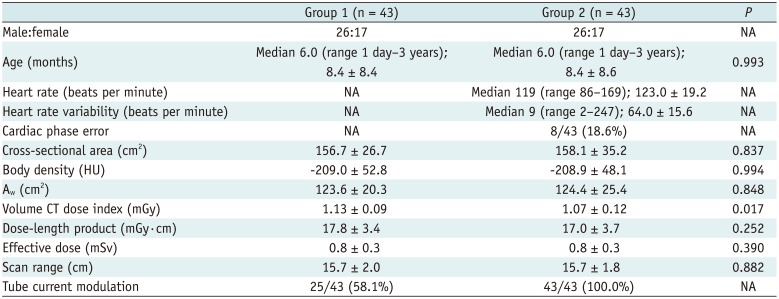
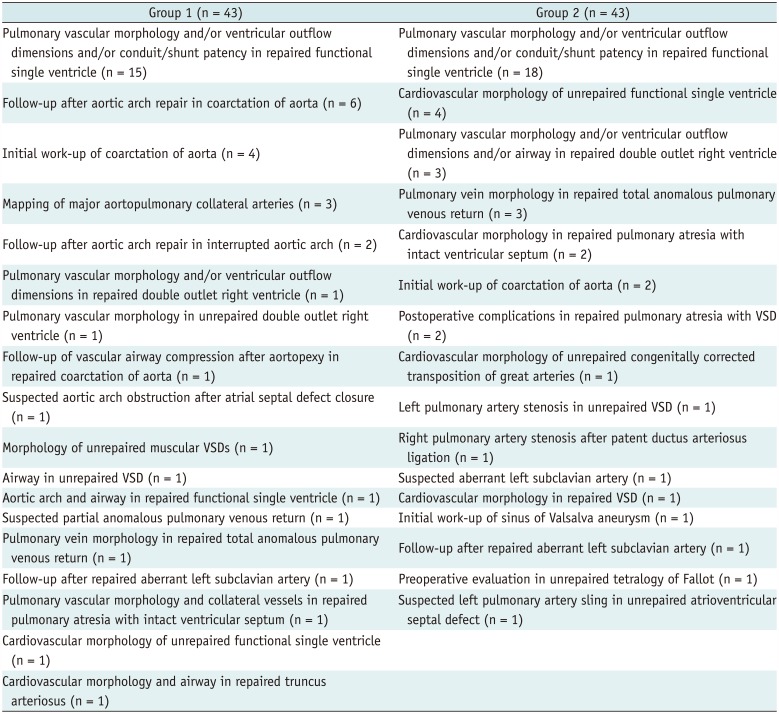

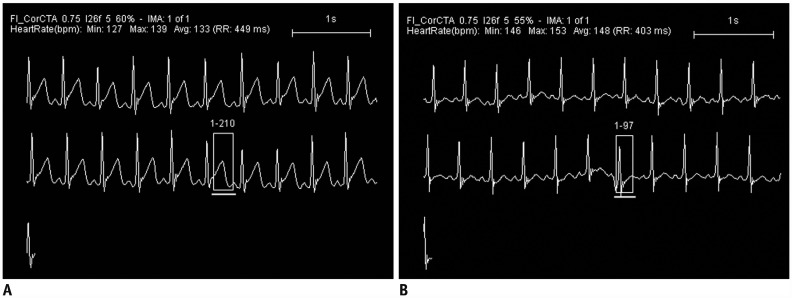

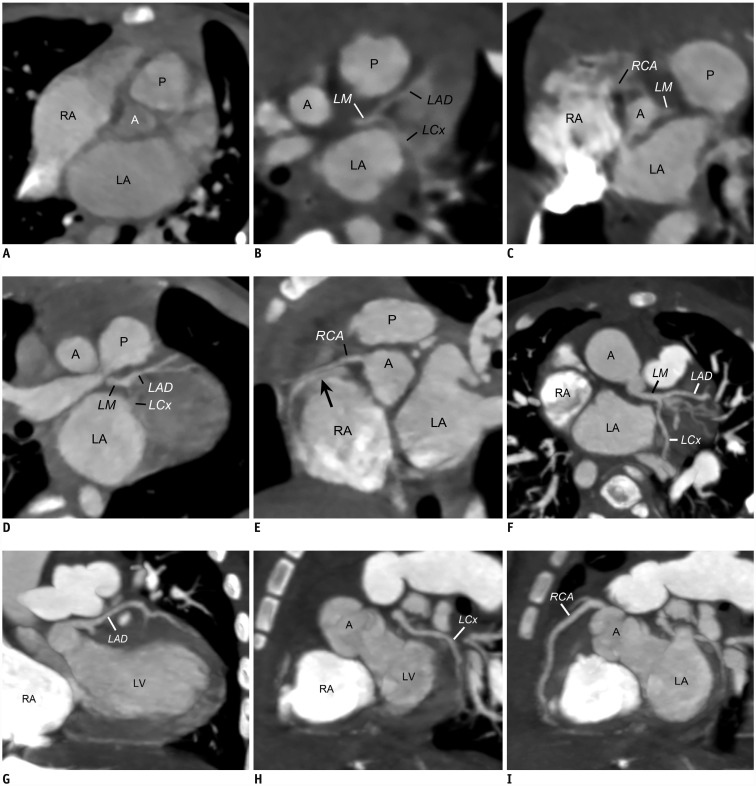
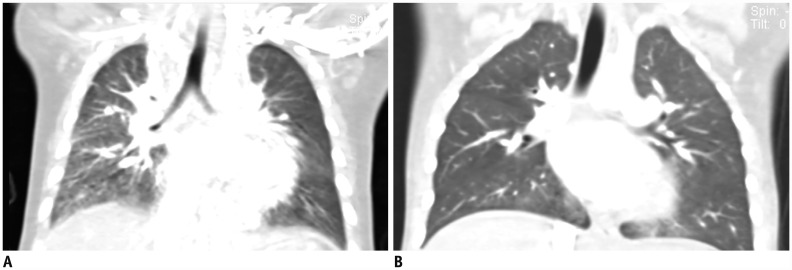






 PDF
PDF ePub
ePub Citation
Citation Print
Print


 XML Download
XML Download